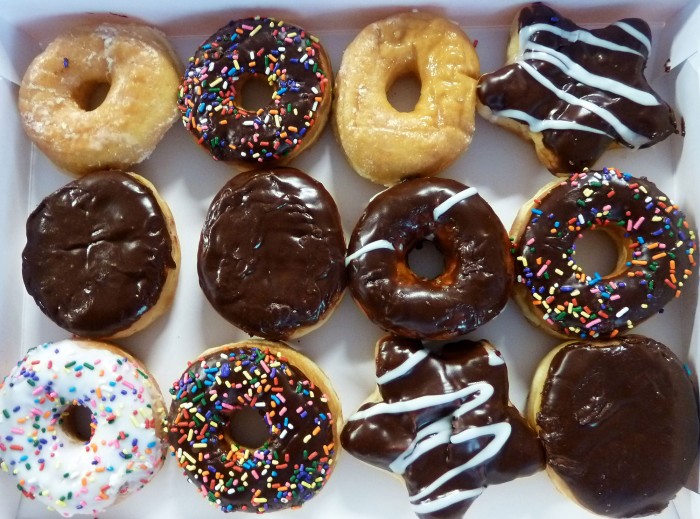Here’s What Happens When You Add Scent to Virtual Reality

I almost ate a foam doughnut the other day because a virtual-reality experiment had me convinced it was real.
I was in the Virtual Human Interaction Lab at Stanford University, looking at a doughnut with chocolate frosting and rainbow sprinkles through the lenses of a virtual-reality headset, while holding in my hand something that felt very much like the same tasty treat and sniffing an unmistakable chocolatey, doughnut-y smell.
Fortunately, I hesitated. But sight, smell, and touch got my mouth watering.
That reaction is good news for Benjamin Li, a postdoctoral research fellow at Stanford who’s researching virtual reality’s influence on our perceptions of food and investigating how smell and touch could be added to VR.
Though consumer virtual reality is still in its earliest days, VR’s utility for influencing perception has been studied for years, and combining VR and scent has been explored, too, by both academics and companies. Li, who’s working with working with Jeremy Bailenson, the founding director of the Virtual Human Interaction Lab, thinks the combination of smell, touch, and VR could be used in a bunch of different ways in the future—some more dystopian-sounding than others.
Imagine a world where, say, salmon has become extinct. Maybe you could use a virtual piece of salmon sushi, a salmon-like smell, and a real chunk of some other fish in the middle of a hand roll to give people who’ve never tried it a sense for what it’s like to eat salmon sushi. Or perhaps using scent along with virtual reality could help you eat a healthier diet without feeling that you’re missing out. You might see and smell a juicy cheeseburger while actually chomping on a plant-based patty.
When it comes to food in VR, seeing is not enough to make someone who’s eating one thing believe it’s really another, Li says. To prove that, he’s conducting experiments with people to see how they react when they feel a doughnut in their hands, see one on their VR headsets, and get a whiff from a swab doused in a chocolate scent.
After the fake doughnut is revealed, Li offers participants real ones to eat. This is more than a reward—the researchers want to figure out if people who see, smell, and touch the doughnut have a greater appetite for real doughnuts than those who don’t.
Li isn’t ready to draw conclusions from the data. But he says that anecdotally, once people see, smell, and touch the doughnut virtually they start craving one—not surprising, considering how I felt after my experience in the lab.
I asked Li if he’s experimenting with combining any other food odors with virtual reality, and he said it’s possible; he’s also tracked down popcorn and bacon scents. But what he’s more interested in now is looking at the importance of the food’s immediate environment—like a doughnut shop, for instance, rather than the sparsely furnished room we’re in. One of his next steps, he says, may be building a virtual storefront.
“Imagine if I put you in a doughnut shop and there’s a crowd bustling and you smell the doughnuts in the shop. Perhaps this would make a greater impact on you than being in the lab,” he says.
Keep Reading
Most Popular
Large language models can do jaw-dropping things. But nobody knows exactly why.
And that's a problem. Figuring it out is one of the biggest scientific puzzles of our time and a crucial step towards controlling more powerful future models.
The problem with plug-in hybrids? Their drivers.
Plug-in hybrids are often sold as a transition to EVs, but new data from Europe shows we’re still underestimating the emissions they produce.
How scientists traced a mysterious covid case back to six toilets
When wastewater surveillance turns into a hunt for a single infected individual, the ethics get tricky.
Google DeepMind’s new generative model makes Super Mario–like games from scratch
Genie learns how to control games by watching hours and hours of video. It could help train next-gen robots too.
Stay connected
Get the latest updates from
MIT Technology Review
Discover special offers, top stories, upcoming events, and more.